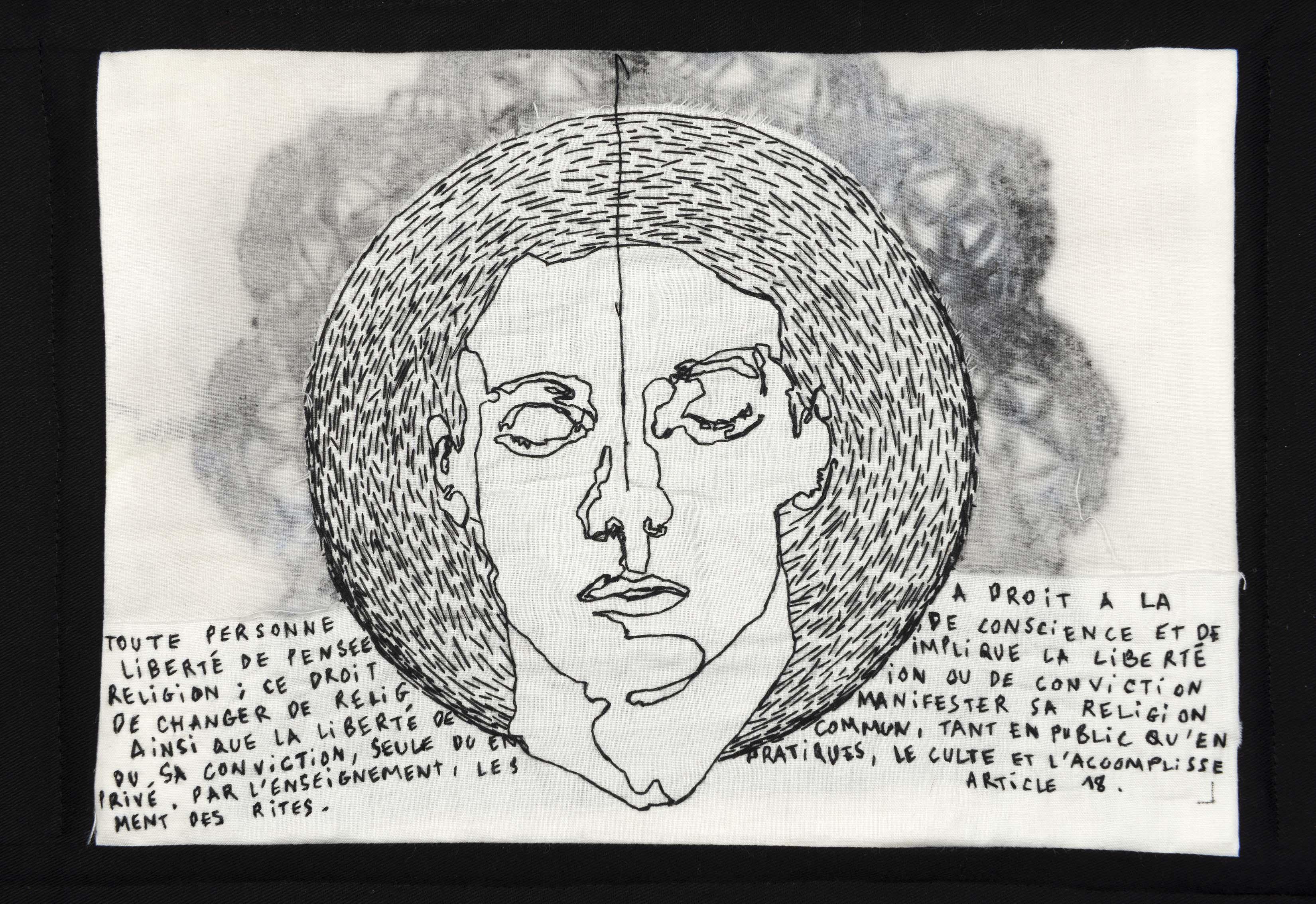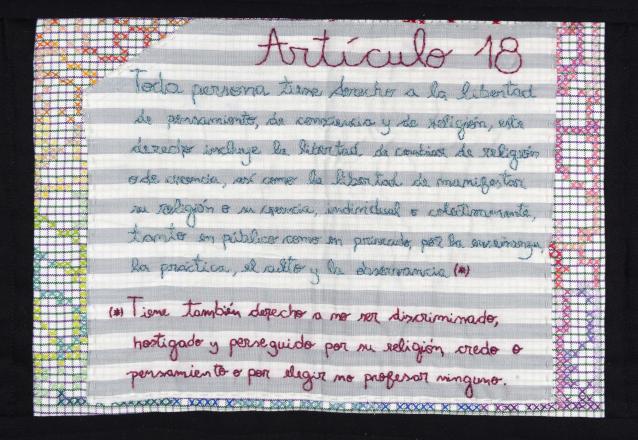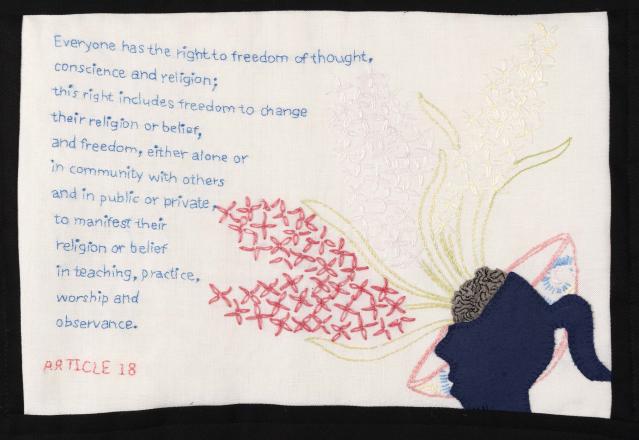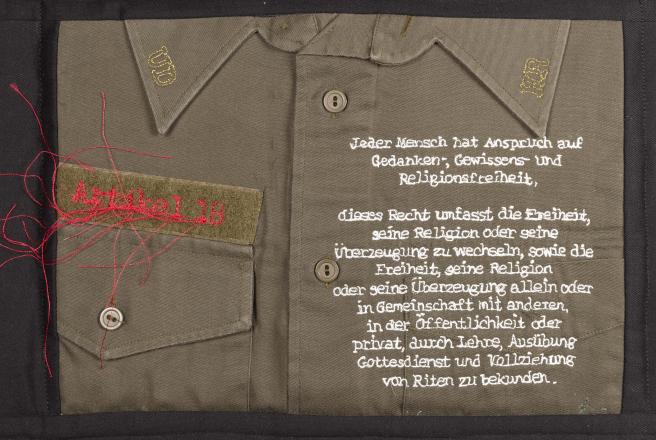Article 18
Everyone has the right to freedom of thought, conscience and religion; this right includes freedom to change his religion or belief, and freedom, either alone or in community with others and in public or private, to manifest his religion or belief in teaching, practice, worship and observance.
Marine Fisch
About my work
The fabric is a patch of sheet. This Article is about freedom of thoughts; I liked the idea that so many thoughts are sleeping somewhere in this fabric. We see a head. Isn’t it the cradle of our thoughts? An arrow is pointing upward, towards the sky: the thought going out.
The hair is in a circle, like an aureole, highlighted by a black trace: a print of an old doily. I love doilies. There is magic in them. They are like mandalas. When we are making them, we take a posture of meditation; sometimes even a kind of trance can settle on us.
I wanted this work to refer to the idea of religion: the aureole like a universal symbol of spirituality, the doily like a pagan aureole. An artwork celebrating freedom of thought for everyone. All thought should be respected as long as it respects others. That was the purpose of my embroidery.
- Marine Fisch
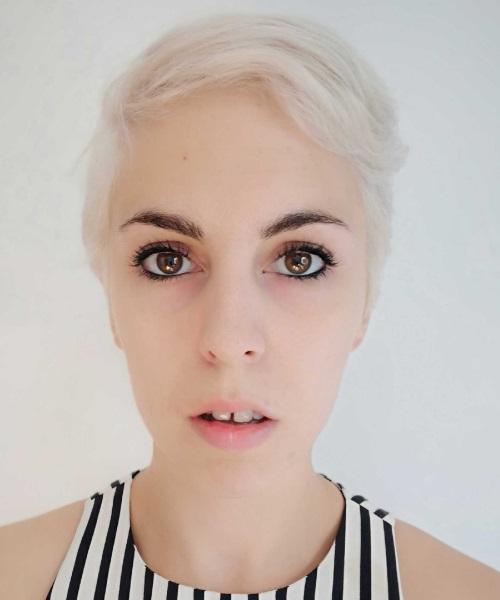
About me
Marine Fisch is a mixed-media artist born in 1987, living and working in Lyon, France.
She is a very happy mother of a little girl, finds happiness in books, walks, folk music and red-wine late hours. Marine is an artist, but she’s also a teacher. Or a self-proclaimed art therapist. She doesn’t really know how to name it. But she tries to help young and old people by art. In schools, museums, retirement homes or in her own studio, she encourages her students to express themselves and experiment with all kinds of visual art.
She studied at university in Strasbourg and in 2011 obtained a Master’s in visual art. From that day, she draws, manipulates and creates in an intimate universe—a universe where little things are magnified. For her, art is hidden in the poetry of everyday life and the act of creation begins by tracking those little things, collecting them and then revealing their artistic essences.
Her work takes many different forms: embroidery on found objects, soft sculptures and oriented ready-mades. Lately, she has begun to write and illustrate poems and books for children (and grown children) celebrating our precious Mother Earth. She is a militant for equal rights for every human being, animal and all kinds of life. Marine’s artwork conveys an animist purpose supported by a strong ecologist posture. In fact, for her, art is a weapon. And in her case, a soft weapon: a diffuser of thoughts to make a silent change, first step of the green revolution.

